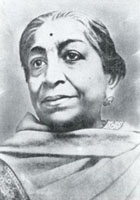From Wikipedia, the free encyclopedia
Jump to navigationJump to search
I Saw the Figure 5 in Gold, also known as
The Figure 5 in Gold,[1] is a 1928 painting by American artist
Charles Demuth. It has been described as influenced by
Futurism and
Cubism. Painted as a homage to Demuth's friend
William Carlos Williams, the painting references Williams' poem
The Great Figure, which describes a
fire engine speeding through the streets of New York on a rainy night. The painting's title is a phrase from the poem.
Charles Demuth[edit]
Demuth was known as a painter in the
Precisionist style, incorporating clean lines and geometry into images. Art historian H.W. Janson mentions Demuth's interactions with Cubist painters in New York, and the connections between Futurism and Precisionism styles.
[2] This particular work was part of a series of five abstract, poster-style portraits Demuth painted between 1924 and 1929 in homage to his personal artist and writer friends: William Carlos Williams,
Georgia O'Keeffe,
Arthur Dove,
Charles Duncan and
John Marin.
[1] He and Williams had become friends when they were both living in the same boarding house in
Philadelphia while Demuth was studying at the
Pennsylvania Academy of the Fine Arts and Williams was attending the
University of Pennsylvania School of Medicine. As with
I Saw the Figure 5 in Gold, each painting incorporated the artist's name. This portrait series is often described as also including writers Marsden Hartley, Gertrude Stein, Eugene O'Neill and Wallace Stevens, but those four were never completed. The Yale University Art Gallery has the preliminary sketch, in watercolor and graphite, for the
Marsden Hartley portrait.
[3]
Poem and painting[edit]
William Carlos Williams claims that the inspiration for the 32-word poem
The Great Figure[4] (1920) came from seeing a fire engine pass him by, sounding gong clangs and siren howls as it receded in the night. He said he was so struck by the sight that he took paper and pencil out of his pocket and wrote the poem, standing there on the sidewalk.
[5] Two lines: "I saw the figure 5/in gold" were taken by Demuth for his painting's title.
[6] The upper right corner has an arc, implying a fragment of a large number five, repeated three times in progressively smaller, complete number fives to create an impression of the fire engine moving away from the viewer. The fire engine itself is reduced to an abstracted form composed of red rectangles, but there is a hint of a ladder on the right side and an axle across the bottom. Above the truck are globular streetlamps flanked by sidewalks and buildings in blacks and grays. Demuth conveyed his friendship with Williams by incorporating fragments of his name: "Bill" across the top, and "CARLO" (the "O" cut off and the "S" missing entirely) in yellow dots as in an illuminated theater sign. Across the bottom the painter has placed his own initials "C.D." and also the poet's "W.C.W." in the same size and color.
[5]





